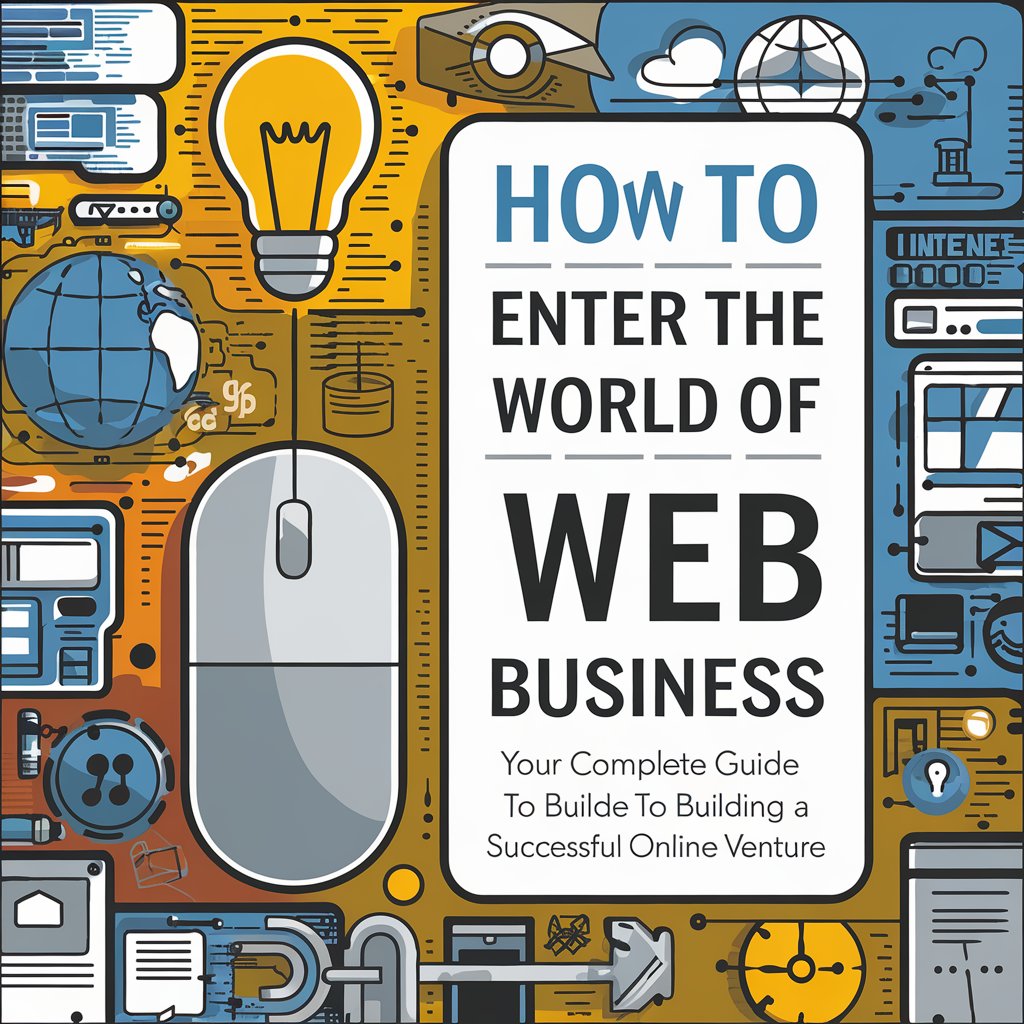
The internet has revolutionized how we live, work, and communicate. More than ever before, it offers a vast array of opportunities for entrepreneurs, creatives, and professionals to launch and grow their businesses. From e-commerce to digital services, affiliate marketing, content creation, and more, the web business world provides a path to financial independence, career freedom, and personal fulfillment. If you’re eager to start your own journey into the world of online business, but don’t know where to begin, this guide will walk you through the essential steps to get started and succeed.
Why Start a Web Business?
Before diving into the specifics, it’s important to understand why starting a web business can be life-changing. Here are a few key reasons:
- Low Barriers to Entry: Unlike traditional businesses, starting a web business requires minimal capital. With just a computer and internet connection, you can launch a business from your home.
- Global Reach: The internet allows you to reach a global audience, giving you access to potential customers from all around the world.
- Flexibility and Freedom: Running an online business offers unparalleled flexibility. You can set your own hours, work from anywhere, and scale your business at your own pace.
- Passive Income Potential: Many online business models offer opportunities to earn passive income, where you make money even when you’re not actively working.
Now that you know why entering the world of web business is a great opportunity, let’s explore the various ways you can do it.
Step 1: Choose Your Business Model
The first step in entering the web business world is to choose the right business model. Here are some of the most popular options:
1. E-Commerce
E-commerce involves selling products online, either through your own website or a third-party platform like Amazon, Etsy, or eBay. E-commerce businesses can range from selling physical products (like clothing, electronics, or handmade crafts) to digital goods (such as e-books or software). With the rise of dropshipping and print-on-demand, you can even sell products without holding inventory.
- Pros: Scalability, passive income potential, global market access
- Cons: Competitive market, requires marketing and customer service skills
2. Affiliate Marketing
Affiliate marketing allows you to earn commissions by promoting other people’s products or services. When someone clicks on your affiliate link and makes a purchase, you earn a percentage of the sale. Many bloggers, content creators, and website owners use affiliate marketing to monetize their platforms.
- Pros: Low startup costs, passive income, no need to create products
- Cons: Building an audience takes time, earnings can fluctuate
3. Freelancing
Freelancing involves offering services to clients online. Whether you’re a writer, graphic designer, web developer, or virtual assistant, there’s a high demand for freelancers in almost every industry. Freelancing can be done through platforms like Upwork, Fiverr, or by directly marketing your services to clients.
- Pros: Flexibility, immediate income, no upfront investment
- Cons: Requires consistent client acquisition, trading time for money
4. Digital Products and Courses
If you have expertise in a particular area, you can create and sell digital products, such as e-books, online courses, or membership sites. This is an excellent way to leverage your knowledge and skills to create a scalable income source.
- Pros: High-profit margins, passive income, scalability
- Cons: Requires content creation and marketing expertise
5. Blogging and Content Creation
Blogging, podcasting, and YouTube content creation are popular ways to build an online presence and generate income. You can monetize your content through ads, sponsorships, affiliate marketing, or selling your own products.
- Pros: Creative freedom, passive income potential, low startup costs
- Cons: Takes time to build an audience, earnings may be slow at first
Step 2: Develop a Business Idea
Once you’ve chosen your business model, the next step is to develop a clear business idea. This involves identifying your niche, target audience, and unique selling proposition (USP). Here’s how you can do it:
Identify Your Niche
A niche is a specific area of focus for your business. The more specific your niche, the easier it will be to attract a targeted audience. For example, instead of starting a general e-commerce store, you could focus on selling eco-friendly products for outdoor enthusiasts. Think about your interests, passions, and areas of expertise, and look for gaps in the market where your business can provide value.
Research Your Target Audience
Knowing who your target audience is will help you create products, services, and marketing strategies that resonate with them. Consider the demographics, interests, and pain points of the people you want to serve. Understanding your audience’s needs is crucial for building a successful web business.
Define Your Unique Selling Proposition (USP)
Your USP is what sets your business apart from the competition. It’s the reason why customers should choose you over other businesses. Whether it’s exceptional customer service, unique products, or innovative technology, having a clear USP will make your business stand out in a crowded market.
Step 3: Build Your Online Presence
Once you have a clear business idea, it’s time to establish your online presence. Here’s how:
1. Create a Website
Your website will be the hub of your online business. It’s where potential customers will learn about your products, services, and brand. Choose a domain name that reflects your business, and use a website-building platform like WordPress, Shopify, or Wix to create a professional-looking site. Make sure your website is easy to navigate, mobile-friendly, and optimized for search engines (SEO).
2. Set Up Social Media Profiles
Social media is a powerful tool for building brand awareness and connecting with your audience. Choose platforms that are most relevant to your business—whether it’s Instagram, Facebook, LinkedIn, or YouTube—and start sharing valuable content that engages your followers.
3. Build an Email List
Email marketing is one of the most effective ways to communicate with your audience and convert leads into customers. Offer valuable content (like a free guide or discount) in exchange for email sign-ups, and use email marketing tools to nurture relationships with your subscribers.
Step 4: Start Marketing Your Business
Marketing is key to attracting customers and growing your web business. Here are some strategies to consider:
1. Content Marketing
Content marketing involves creating valuable content (such as blog posts, videos, or infographics) that educates or entertains your audience. By providing helpful information, you can establish yourself as an authority in your niche and build trust with potential customers.
2. Search Engine Optimization (SEO)
SEO involves optimizing your website and content to rank higher in search engine results pages. This helps drive organic traffic to your site, making it easier for potential customers to find you. Use tools like Google Keyword Planner to identify keywords that your target audience is searching for and incorporate them into your content.
3. Paid Advertising
If you want to drive traffic to your website quickly, paid advertising is a great option. Platforms like Google Ads, Facebook Ads, and Instagram Ads allow you to target specific demographics and reach a wider audience.
4. Influencer Marketing
Partnering with influencers in your niche can help you reach a larger audience and build credibility. Look for influencers who have a strong following and whose values align with your brand.
Step 5: Monitor and Scale Your Business
As your web business grows, it’s important to continuously monitor your progress and make adjustments. Use tools like Google Analytics, social media insights, and sales reports to track your performance. Identify what’s working and what’s not, and make data-driven decisions to improve your strategies.
Scaling your business might involve expanding your product line, hiring a team, or investing in more advanced marketing tactics. The key is to stay adaptable and be willing to pivot when necessary.
Conclusion: Take the Leap and Transform Your Life
Entering the world of web business offers limitless possibilities. Whether you’re looking for financial independence, the freedom to work on your own terms, or the chance to pursue your passion, starting an online business can be the key to transforming your life.
The process may seem daunting at first, but by following the steps outlined in this guide—choosing the right business model, developing a clear idea, building an online presence, marketing your business, and scaling over time—you can create a successful web business that aligns with your goals and values.
Remember, success doesn’t happen overnight. It takes dedication, learning, and persistence. But with the right mindset and strategies, you can unlock the full potential of the internet and build a thriving business that changes your life for the better. So, what are you waiting for? The web business world is waiting for you—take the leap and start your journey today.










